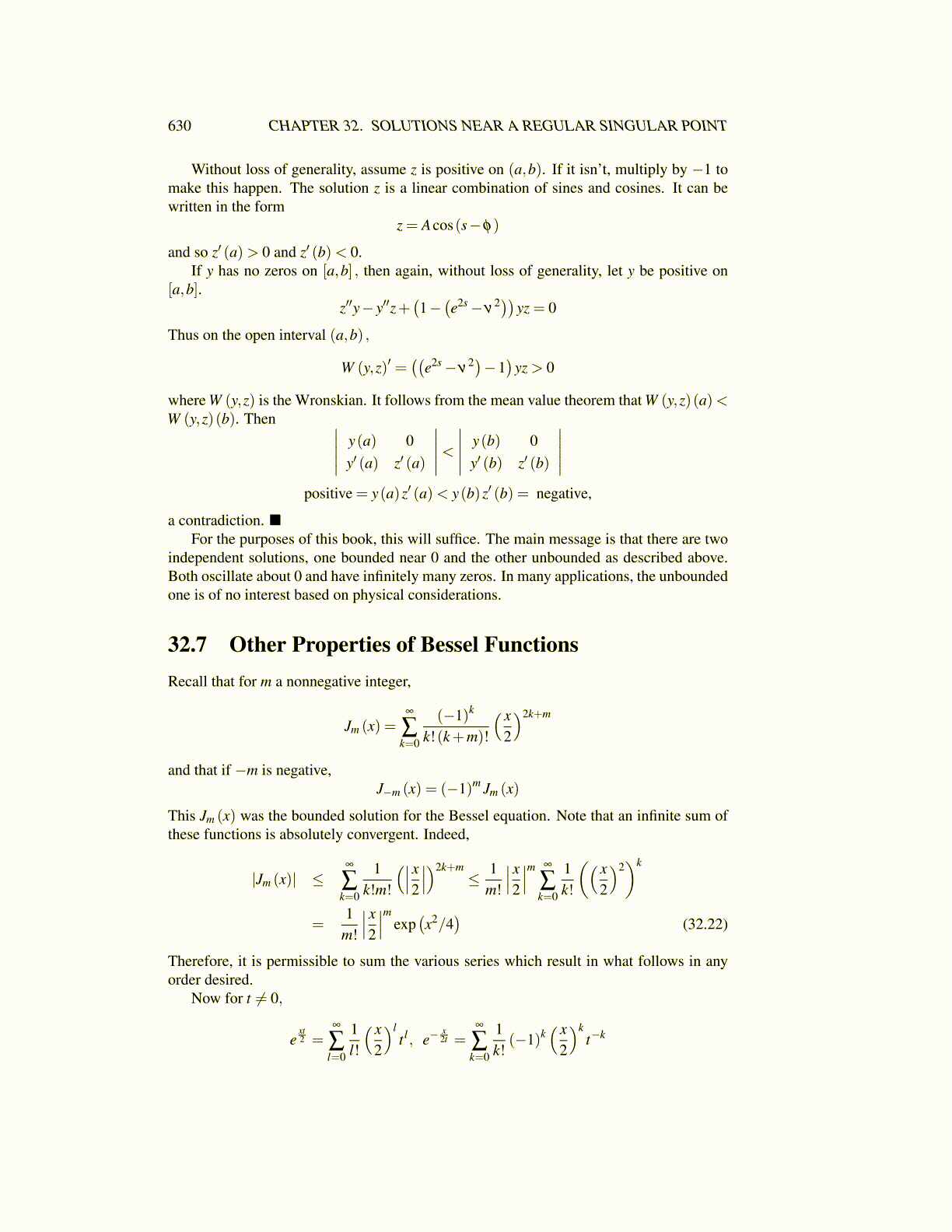
630 CHAPTER 32. SOLUTIONS NEAR A REGULAR SINGULAR POINT
Without loss of generality, assume z is positive on (a,b). If it isn’t, multiply by −1 tomake this happen. The solution z is a linear combination of sines and cosines. It can bewritten in the form
z = Acos(s−φ)
and so z′ (a)> 0 and z′ (b)< 0.If y has no zeros on [a,b] , then again, without loss of generality, let y be positive on
[a,b].z′′y− y′′z+
(1−(e2s−ν
2))yz = 0
Thus on the open interval (a,b) ,
W (y,z)′ =((
e2s−ν2)−1
)yz > 0
where W (y,z) is the Wronskian. It follows from the mean value theorem that W (y,z)(a)<W (y,z)(b). Then ∣∣∣∣∣ y(a) 0
y′ (a) z′ (a)
∣∣∣∣∣<∣∣∣∣∣ y(b) 0
y′ (b) z′ (b)
∣∣∣∣∣positive = y(a)z′ (a)< y(b)z′ (b) = negative,
a contradiction. ■For the purposes of this book, this will suffice. The main message is that there are two
independent solutions, one bounded near 0 and the other unbounded as described above.Both oscillate about 0 and have infinitely many zeros. In many applications, the unboundedone is of no interest based on physical considerations.
32.7 Other Properties of Bessel FunctionsRecall that for m a nonnegative integer,
Jm (x) =∞
∑k=0
(−1)k
k!(k+m)!
( x2
)2k+m
and that if −m is negative,J−m (x) = (−1)m Jm (x)
This Jm (x) was the bounded solution for the Bessel equation. Note that an infinite sum ofthese functions is absolutely convergent. Indeed,
|Jm (x)| ≤∞
∑k=0
1k!m!
(∣∣∣ x2
∣∣∣)2k+m≤ 1
m!
∣∣∣ x2
∣∣∣m ∞
∑k=0
1k!
(( x2
)2)k
=1
m!
∣∣∣ x2
∣∣∣m exp(x2/4
)(32.22)
Therefore, it is permissible to sum the various series which result in what follows in anyorder desired.
Now for t ̸= 0,
ext2 =
∞
∑l=0
1l!
( x2
)lt l , e−
x2t =
∞
∑k=0
1k!
(−1)k( x
2
)kt−k